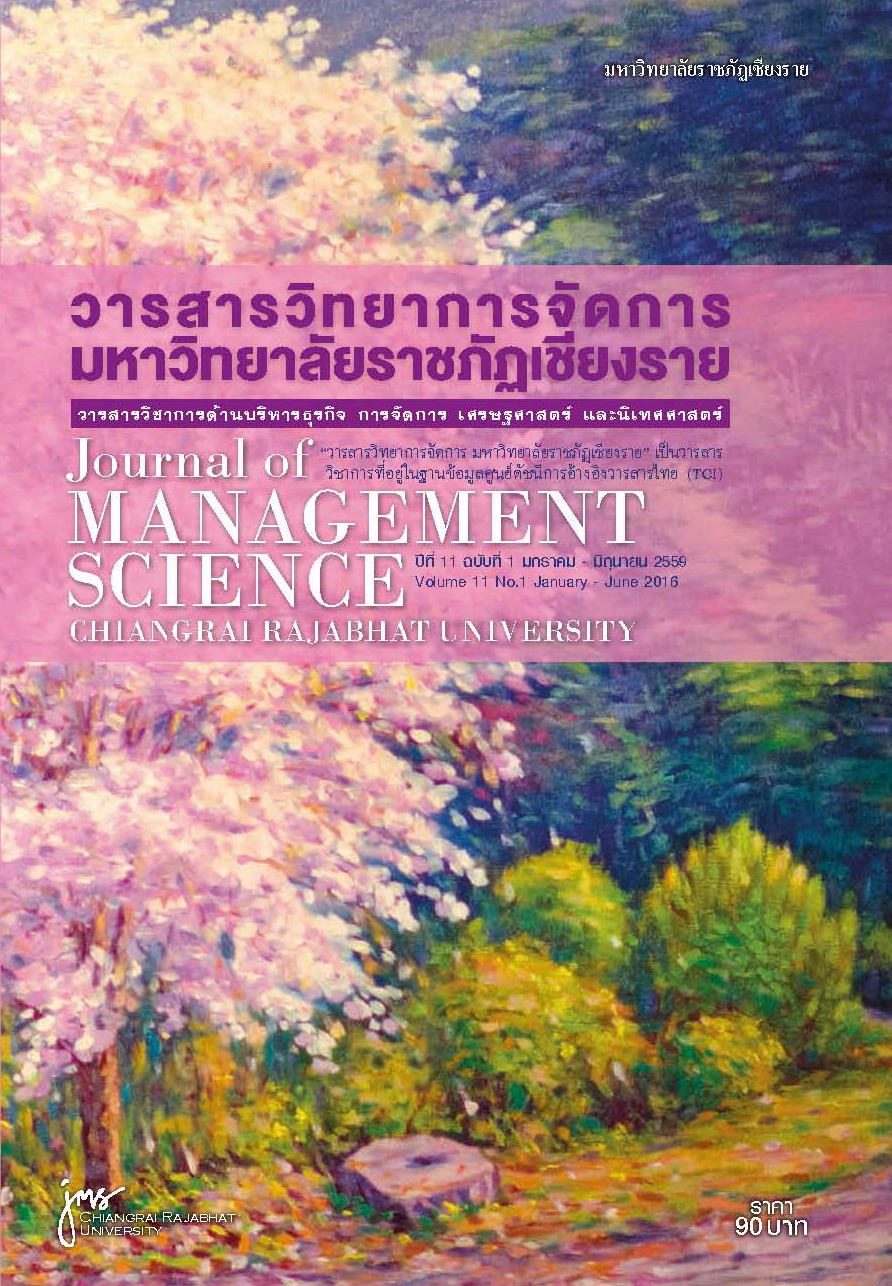Digital Literacy, Digital Natives and Family
Main Article Content
Abstract
The family is the first educational institution that is widely considered to be the elementary cell of social life. It has the duties of raising the education of its members to be good people evolving their personal foundations of relating to others and to the community. Today’s society is an information society. Technology has made people’s lives easier, and updated news or information via the internet can be easily clicked with limitless time and space. The flow of information in all directions inevitably affects us all both positively and negatively; especially the younger generation, or “Digital Natives”, who were born with and have grown up with the digital world’s computers, tablets, smart phones and so on. These gadgets are promptly and daily connected with the internet. Therefore, the children can fulfill themselves with explored information and their favorite applications. These children generally are the direct users and sometimes can be the interactive audience. Hence, the family’s main role in the information society is to monitor, advice and defend the “Digital Natives” in terms of digital literacy, which includes use, understanding and creativity.
Article Details
Views and opinions expressed in the journal do not necessarily reflect those of the editors.
References
กาญจนา แก้วเทพ. (2556). สื่อสารมวลชน ทฤษฏีและแนวทางการศึกษา. กรุงเทพมหานคร: ภาพพิมพ์.
ขนิษฐา จิตแสง. (2557). ความสัมพันธ์ระหว่างปัจจัยด้านบุคคลและกลุ่มบุคคลกับทักษะการรู้เท่าทันสื่ออินเทอร์เน็ตของเยาวชนในเขตเทศบาลนครขอนแก่น. นิเทศศาสตร์ปริทัศน์.1 8(กรกฎาคม): 48-62.
เธียรทศ ประพฤติชอบ.(2557). “สื่อ และ สาร” อาวุธทรงพลังใกล้ตัวคุณ, วารสาร TPA News. 18,212:11-12.
บุบผา เมฆศรีทองคำ. 2554. การรู้เท่าทันสื่อ: การก้าวทันบนโลกข่าวสาร. วารสารนักบริหาร. มหาวิทยาลัยกรุงเทพ. 31(เม.ย – มิ.ย) : 117 - 123
ปัญญาสมาพันธ์เพื่อการวิจัยความเห็นสาธารณะแห่งประเทศไทย. (2555). ถูกรังแกออนไลน์ ภัยไซเบอร์ของเด็กที่ครอบครัวต้องจับตา. ไทยรัฐออนไลน์. แหล่งที่มา: http://www.thairath.co.th/content/257112
สืบค้นเมื่อ 5 พฤษภาคม 2558.
พรรณพิมล วิปุลากร. (2555). (เท่าทัน) สื่อ กับการรับรู้ของเด็ก,รู้ทันสื่อ. กรุงเทพมหานคร: แผนงานสื่อสร้างสุขภาวะเยาวชน (สสย.). กรุงเทพมหานคร : ออฟเซ็ทพลัส.
พูนสุข เวชวิฐาน. (2557). ทฤษฎีครอบครัวเบื้องต้น. กรุงเทพมหานคร: ภาพพิมพ์.
มายด์แชร์. 2557. (27 มีนาคม ). พฤติกรรมชาวดิจิทัลเกาะติดช่องทางออนไลน์. กรุงเทพธุรกิจ. ค้นวันที่ 5 มีนาคม 2558 จาก http://www.apecthai.org/index.php/1640
วิมลทิพย์ มุสิกพันธ์. (2555). ปกป้องลูกจากภัยร้ายทางอินเทอร์เน็ต. (ออนไลน์).
แหล่งที่มา: http://www.healthygamer.net/information/article/65150 สืบค้นเมื่อ 9 เมษายน 2558.
ศรีดา ตันทะอธิพานิช. (2544). ท่องอินเตอร์เน็ตอย่างปลอดภัยและได้ประโยชน์ : ข้อคิดสำหรับผู้ปกครองและเยาวชน. พิมพ์ครั้งที่ 1. กรุงเทพมหานคร: ด่านสุทธาการพิมพ์.
สำนักงานสถิติแห่งชาติ. (2557). การมีการใช้เทคโนโลยีในครัวเรือน. (ออนไลน์).
แหล่งที่มา:service.nso.go.th/nso/nsopublish/service/survey/ICT-HouseExc57.pdf สืบค้นเมื่อ 9 เมษายน 2558.
อุลิชษา ครุฑะเสน. (2556). แนวทางการพัฒนากระบวนการเรียนรู้เท่าทันสื่อของแกนนำเยาวชน.
วารสารวิชาการ Veridian E-Journal. 6 (3) :276-285.
Baran ,S.J. (2004). Introduction to Mass Communication. 3 rd ed. Boston: McGraw Hill.
Buckingham, D. (2005). Media Literacy. Retrived April 19, 2015
from www.medienpaed.com/05-1/Buckingham
Digital Literacy and Digital Literacies. (2014). Retrieved April 10, 2015 from https://cbltmultimedia.files.wordpress.com/2014/01/digitalliteracycanada_2.jpg
Prensky, M. (2001). Digital Natives Digital Immigrants Part 1. Horizon. 9(5):1-6.
McLuhan, M. (1964). Understanding media : The extensions of man. New York: McGraw-Hill book.
Next Generational Emergence in Western Societies: Understanding Digital Natives , 2014
Retrived May 20, 2015 from http://businessfamilies.org/read/2014/07/29/next-generational-emergence-in-western-societies-understanding-digital-natives/
Tapscott, D.(1999). Growing Up Digital: The Rise of the Net Generation. New York: McGraw-Hill book.


